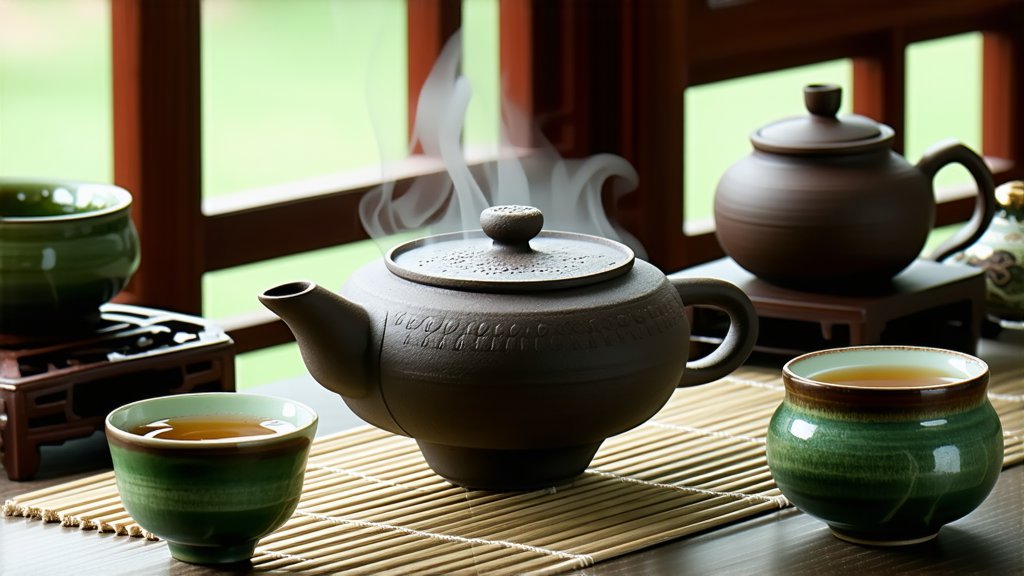
Pu-erh tea, a unique variety within the realm of Chinese dark teas, holds a distinguished place in the world of tea enthusiasts and connoisseurs. This article delves into the rich history, diverse varieties, intricate production methods, and sophisticated art of tasting this exceptional tea. By exploring these facets, we aim to offer an in-depth understanding of Pu-erh tea, shedding light on its cultural significance and the meticulous craftsmanship involved in its creation.
Historical Background
The origin of Pu-erh tea dates back over a thousand years to the ancient caravan routes of Yunnan Province, China. Known as the "Tea Horse Road,� these trade routes facilitated the exchange of tea for horses between Chinese merchants and Tibetan traders. The unique fermentation process that characterizes Pu-erh tea is believed to have been discovered accidentally when tea leaves were compressed into cakes for easier transportation, leading to a natural aging and fermentation process.
Types of Pu-erh Tea
Pu-erh tea is broadly categorized into two types: raw (Sheng) Pu-erh and ripe (Shou) Pu-erh. Raw Pu-erh undergoes a natural fermentation process over time, while ripe Pu-erh is accelerated through a post-fermentation process known as "wet piling." Each type offers distinct flavor profiles and aging characteristics, appealing to different tastes and preferences.
Raw (Sheng) Pu-erh
Raw Pu-erh is prized for its potential to age and develop complex flavors over decades. The initial taste of raw Pu-erh is often described as astringent with floral or fruity undertones. As it ages, the tea mellows out, developing deeper, earthier notes and a more rounded texture.
Ripe (Shou) Pu-erh
Ripe Pu-erh, on the other hand, is subjected to a controlled fermentation process that mimics the natural aging of raw Pu-erh but in a much shorter period. This results in a smoother, richer taste with earthy, woody, and sometimes slightly sweet flavors. It is often preferred by those who enjoy a milder, more approachable tea experience.
Production Process
The production of Pu-erh tea involves several intricate steps, each contributing to the final quality and flavor of the tea. Here's an overview of the key stages:
-
Picking and Withering: High-quality tea leaves are handpicked and then allowed to wither, reducing moisture content.
-
Fixation: The leaves are quickly heated to halt enzymatic activity, preserving their green color and fresh flavor.
-
Rolling: The leaves are rolled to break down cell walls, allowing juices to flow and aiding in the fermentation process.
-
Fermentation: For raw Pu-erh, the leaves are left to ferment naturally over time. For ripe Pu-erh, they undergo a wet piling process where they are piled up and monitored for controlled fermentation.
-
Drying: After fermentation, the leaves are dried to stabilize them and prepare them for storage or further processing.
-
Compressing: Many Pu-erh teas are compressed into various shapes such as cakes, bricks, or pucks using steam heat and pressure.
-
Aging: Both raw and ripe Pu-erh can be aged, with raw Pu-erh benefiting from longer maturation periods to develop more nuanced flavors.
Tasting Pu-erh Tea
Tasting Pu-erh tea is both an art and a science, requiring attention to detail and an open palate. Here's a simple guide to help you appreciate the subtleties of this remarkable tea:
-
Preparation: Use a Yixing clay teapot or a porcelain gaiwan for brewing. Boil water to around 95-100°C (203-212°F). Rinse the tea leaves briefly with hot water to awaken their flavors.
-
Brewing: Add 5-8 grams of Pu-erh tea per 150 ml of water. Steep for 10-15 seconds for the first infusion, gradually increasing steeping time for subsequent infusions.
-
Observation: Examine the tea liquor's color, clarity, and viscosity. Raw Pu-erh typically has a lighter, amber hue, while ripe Pu-erh tends towards deep red or dark brown.
-
Aroma: Inhale deeply to detect the tea's aromatic profile. Note any earthy, floral, fruity, or woody scents.
-
Flavor: Sip slowly, allowing the tea to coat your palate. Pay attention to its body, texture, and aftertaste. Raw Pu-erh may exhibit astringency initially but should mellow with age. Ripe Pu-erh is generally smoother and more mellow.
-
Mouthfeel: Notice the tea's mouthfeel, which can range from silky and velvety to robust and full-bodied.
-
Aftertaste: Evaluate the length and pleasantness of the aftertaste, which can provide insights into the tea's quality and aging potential.
Conclusion
Pu-erh tea is not just a beverage; it is a cultural treasure that embodies centuries of tradition, craftsmanship, and history. From its humble beginnings on the Tea Horse Road to its status as a revered tea globally, Pu-erh continues to captivate tea lovers with its unique flavors and transformative aging process. Whether you prefer the bold complexity of raw Pu-erh or the smooth sophistication of ripe Pu-erh, exploring this ancient tea is sure to enrich your appreciation for the art of tea making and tasting.